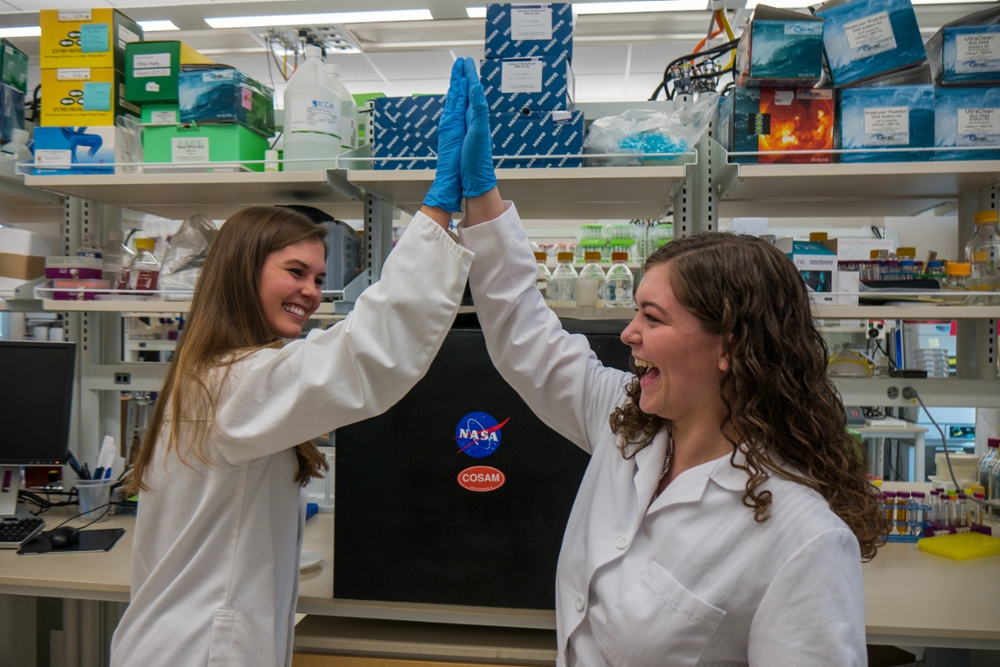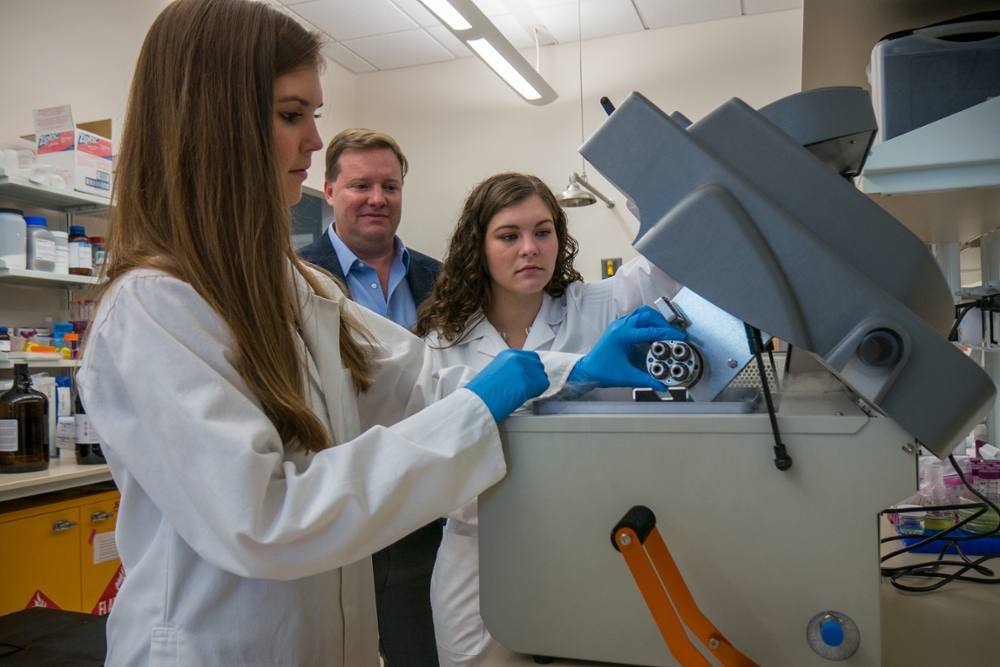Auburn Researchers Awarded $590k Grant from NASA
Auburn University Biological Sciences Professor Dr. Mark Liles, an undergraduate student, and a recent graduate of the Auburn University College of Sciences and Mathematics (COSAM) have recently been awarded a $590,000 grant from NASA to conduct research as part of the Planetary Protection team for the Europa Lander mission.
The Europa Lander mission is an upcoming astrobiology mission during which Europa, an icy moon of Jupiter, will be explored for signs of life. The launch will complement the studies by the Europa Clipper orbiter mission and perform analyses on site.
Recent COSAM graduate Morgan Sisk and undergraduate student Natalie Williams, both originally from Huntsville, Ala., followed similar academic paths after arriving at Auburn. Sisk recently graduated with a degree in biomedical sciences and Williams is a junior studying microbiology, both with aspirations to become doctors. Their paths crossed after they both conducted research in Dr. Liles’ lab and both completed internships at Marshall Space Flight Center in Huntsville.
Sisk completed her internship the year before Williams and began research to support planetary protection to find adhesives that could be used on the spacecraft without contaminating the spacecraft.
“Our mentor at Marshall Space Flight Center came to me with this project idea because there was a tremendous need for planetary protection research in this mission, given the nature of the mission going to an extraterrestrial body and the requirements that are in place by NASA and also international committees to ensure that everything is sterile and not contaminating biospheres,” Sisk said. “So, he came to me with an idea because this particular mission does not lend itself well to previous techniques that we’ve used to achieve those requirements because of the hardware constrictions and the nature of the mission.”
The research began by investigating materials that were already a part of the rocket. Sisk helped develop a plan of action and build the research lab over the summer. At the conclusion of her internship, the team at Marshall suggested she compete for a contract to continue the research when she returned to Auburn.
“I was really grateful to have had a connection with Dr. Liles because I thought it would be a project amenable to the research his lab conducts, even though it was kind of a different arena,” Sisk said. “I called him and asked if he would be willing to take me on, and he very graciously accepted.”
Auburn was granted the contract and after Williams continued the research at Marshall the next summer, Sisk and Williams began to work together in Dr. Liles’ lab to move the research into the next phase. Over the last year there was a request by NASA for additional proposals for planetary protection and the Auburn team submitted a proposal that includes researching a wider range of adhesives with different kinds of material. Out of 35 submitted proposals, they recently learned they were one of seven proposals to be funded.
“We were particularly interested in Bacillus species spores and testing inherent rocket motor materials against those spores to determine if we could account for any bioburden reductions within the material already present in the motor,” Williams shared about the proposal. “We performed some preliminary experiments, got some good reduction of spore viability results, and with that we were able to write the proposal using that data.”
Both Sisk and Williams said the current research has fueled their passion for research.
“I am incredibly intrigued by space exploration and definitely have a passion for learning about space and going into this new frontier,” Sisk said.
Williams agreed and said she feels that out of all of the projects they could have been involved with during their internships, working as part of the Planetary Protection team for the Europa Lander mission was the coolest opportunity.
“Sometimes I sat at my desk and thought about the work and important projects carried out by other NASA interns, each of them incredibly fascinating in their own right, but we get to work on a project that is in search for life on Europa and that, I feel, might be as cool as it gets,” she shared. “And we have been privileged enough to continue that at Auburn. It has been amazing.”
The first phase of the Europa mission (Europa Clipper) launch is expected to begin in the year 2025. Since Sisk graduated, she is continuing the research as a temporary employee for several months. She said when she leaves she knows the research will be in capable hands.
“Natalie has been working very hard and is ready to continue moving the next phase forward after I leave,” Sisk said. “I’m confident she will do an amazing job.”
The work of these two undergraduate students has been what Dr. Liles describes as “diligent,” “harmonious” and “productive.”
“It is very rare in my experience for undergraduate students to bring a research project into a laboratory, and both Morgan and Natalie have worked diligently since the day they joined my research group and have made a lot of progress in identifying specific adhesives that have sporicidal activity and can be used to prevent microbial contamination of spacecraft that are searching for signs of extra-terrestrial life,” Dr. Liles shared. “Morgan and Natalie have worked as if they were graduate students already and there is no doubt they each have a brilliant career ahead of them no matter which career path they take in the future.”
Latest Headlines
-
02/12/2025
-
02/11/2025
-
02/10/2025
-
01/30/2025
-
12/03/2024


